The fascinating tale of the Riace Bronzes' Return to Glory
A remarkable discovery sent shockwaves through the archaeological world when Roman diver Stefano Mariottini stumbled upon two colossal figures resting on the seabed near the small town of Riace, Italy in August 1972. Encrusted with marine life, the bronzes had lain hidden for centuries on the seabed until Mariottini's chance encounter. These figures, now celebrated as the Riace Bronzes, emerged from obscurity after centuries beneath the waves.
What makes the finding even more captivating is the mystery surrounding its circumstances and its chance discovery. Mariottini was diving about 8 meters deep when he saw a hand sticking out from the sandy bottom. He dug in the murky sea floor and uncovered first a face, then a whole body lying on its back, before uncovering a second body lying on its side. Thinking he had found human remains he called the police.
Over the next few days, municipal divers attached ropes to balloons, which were then inflated with air to lift the bronze statues to the surface and identified as representations of two ancient Greek warriors, known as Statue A and Statue B. Statue B was brought up to the surface on August 21st, while Statue A was retrieved the following day as it had fallen back into the sea before being finally safely brought to shore.
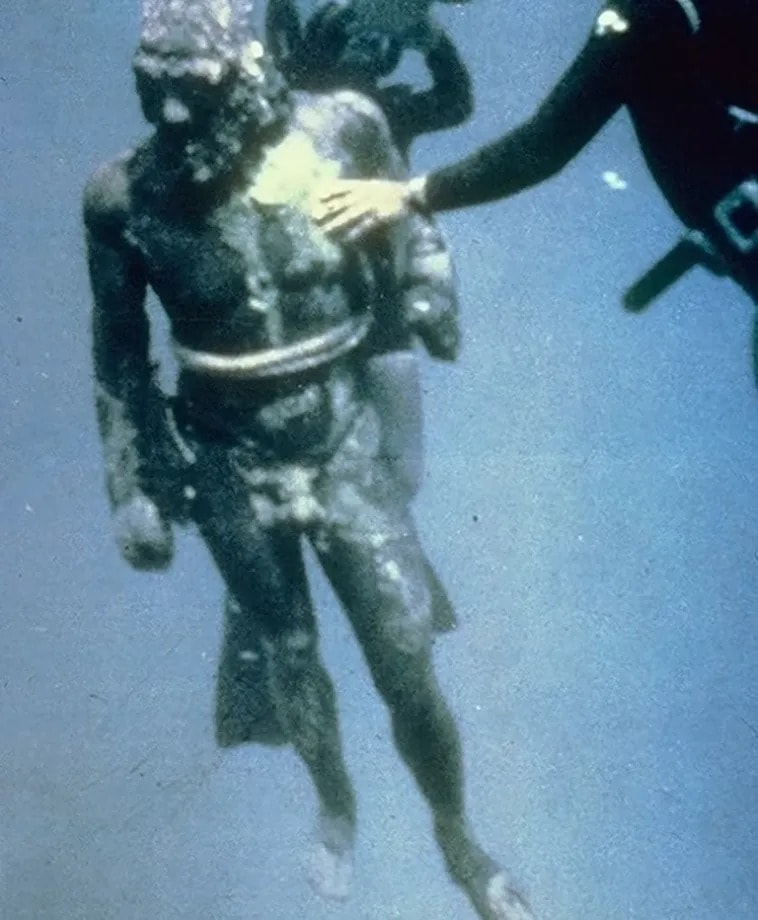

Both nearly two meters tall, the iconic Riace Bronzes, date all the way back to the 5th century BC. They represent a pinnacle of ancient Greek classical sculpture and are considered some of the finest examples of Greek classical sculpture in existence. Found in ‘contrapposto’, a pose that was popular in ancient Greek sculpture where the body's weight is shifted onto one leg, the life-size male figures are muscular and athletic, with highly detailed anatomy and facial features.
The two statues are thought to represent Tydeus (Statue A) and Amphiaraus (Statue B), two warriors from Aeschylus‘ tragic play, ‘Seven Against Thebes’ (about Polynices after the fall of his father, King Oedipus). In the play, Tydeus is one of the seven champions who lead the assault against the city of Thebes. A fierce warrior known for his bravery and strength, Tydeus plays a significant role in the epic battle depicted in the play.
Amphiaraus is another one of the seven champions in the play, who lead the assault against the city of Thebes. Unlike Tydeus, Amphiaraus is a seer and prophet, known for his wisdom and foresight. He possesses the ability to foresee his own death in the battle, but he chooses to participate nonetheless due to various circumstances, including pressure from his wife. Amphiaraus is a complex character who adds depth to the tragic narrative of the play.
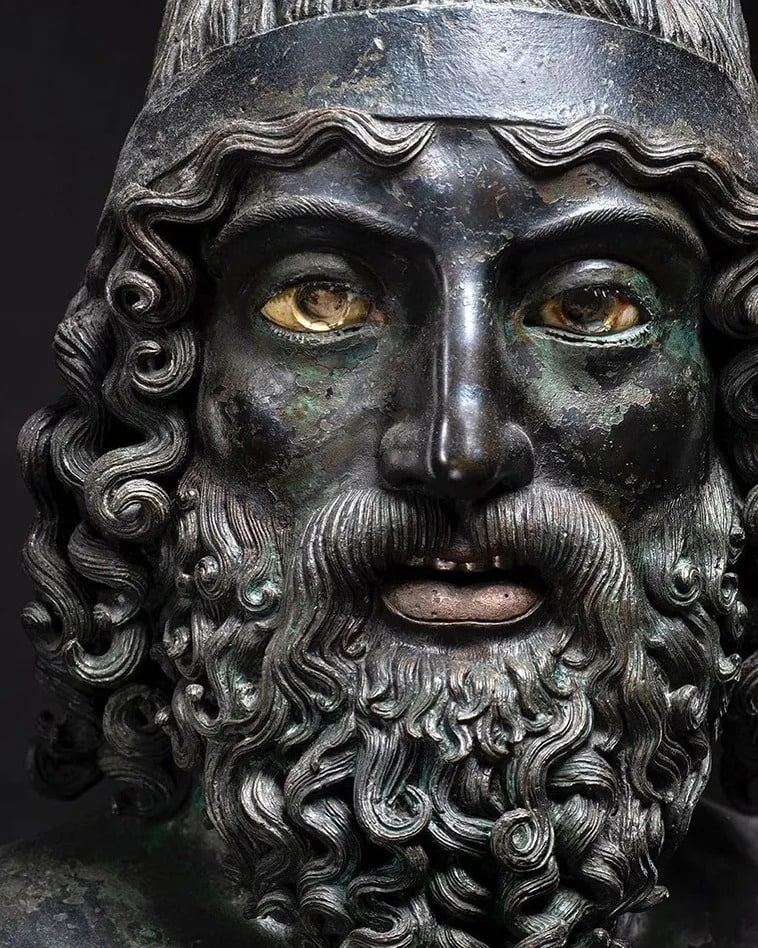
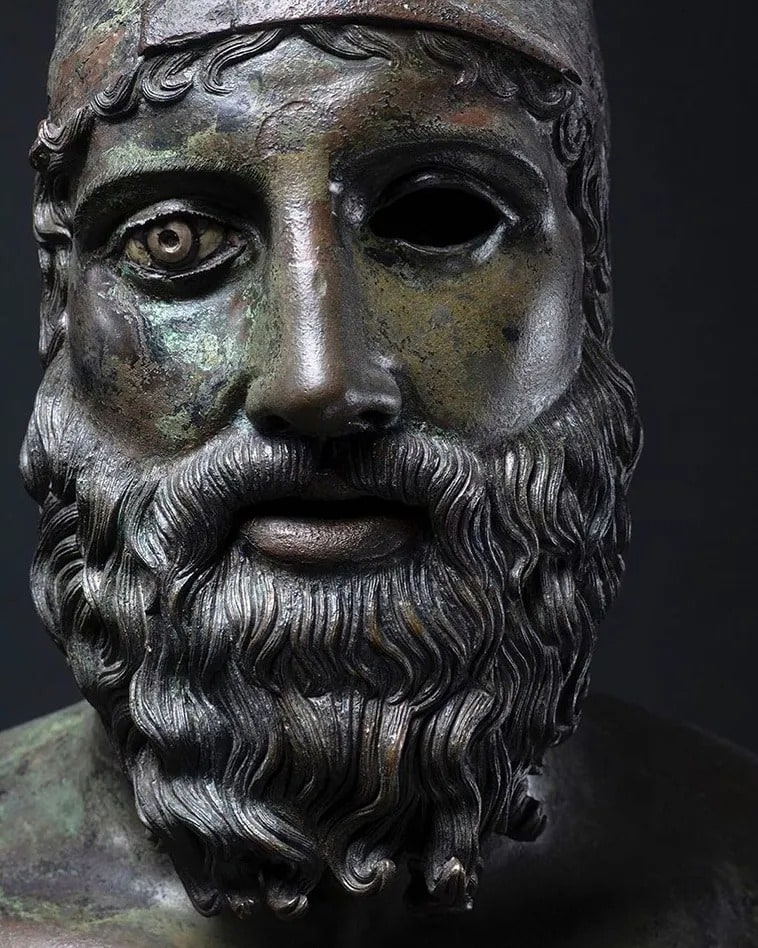
It is thought that perhaps the two ancient Greek statues may have been part of a monumental sculptural composition – or a larger sculptural ensemble. The statues have lead dowels installed in their feet, indicating that they were originally mounted on a base and installed as part of some sculptural group.
The two ancient warriors are an example of the severe style. The Severe or Early Classical style describes the trends in Greek sculpture between c. 490 and 450 B.C.E. Artistically this stylistic phase represents a transition from the rather austere and static Archaic style of the sixth century B.C.E. to the more idealised Classical style. The Severe style is marked by an increased interest in the use of bronze as a medium as well as an increase in the characterisation of the sculpture, among other features.
Since their retrieval, the Riace Bronzes have become prized cultural artefacts in Italy, captivating audiences worldwide through exhibitions in prestigious museums. They have also been the subject of numerous studies and analyses, including tests to determine their composition, age, and the techniques used to create them.
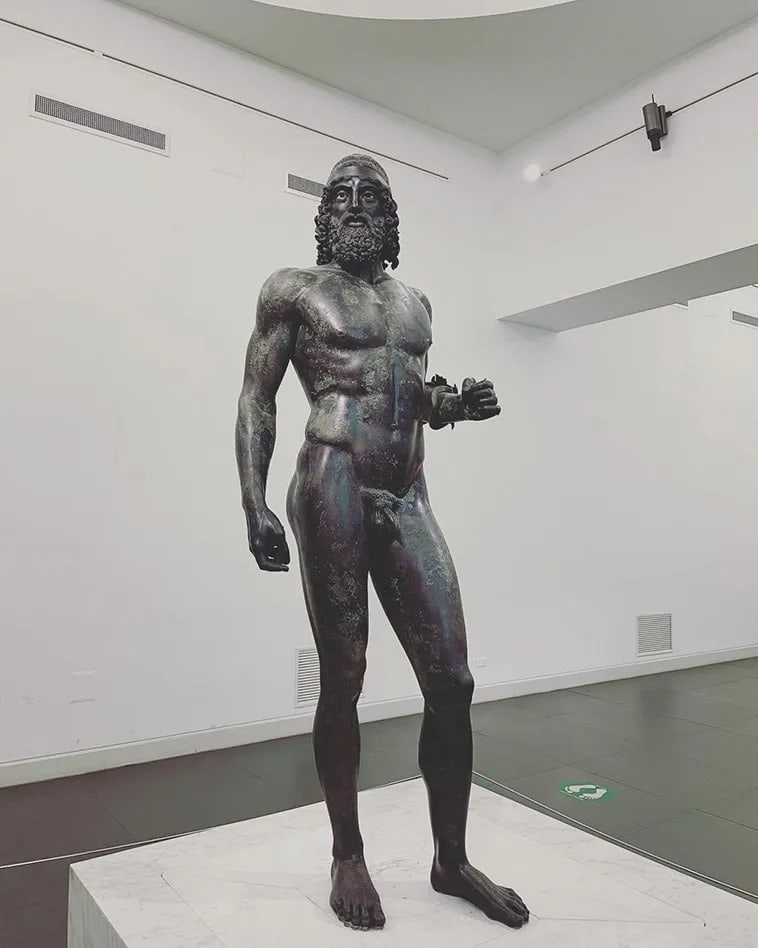
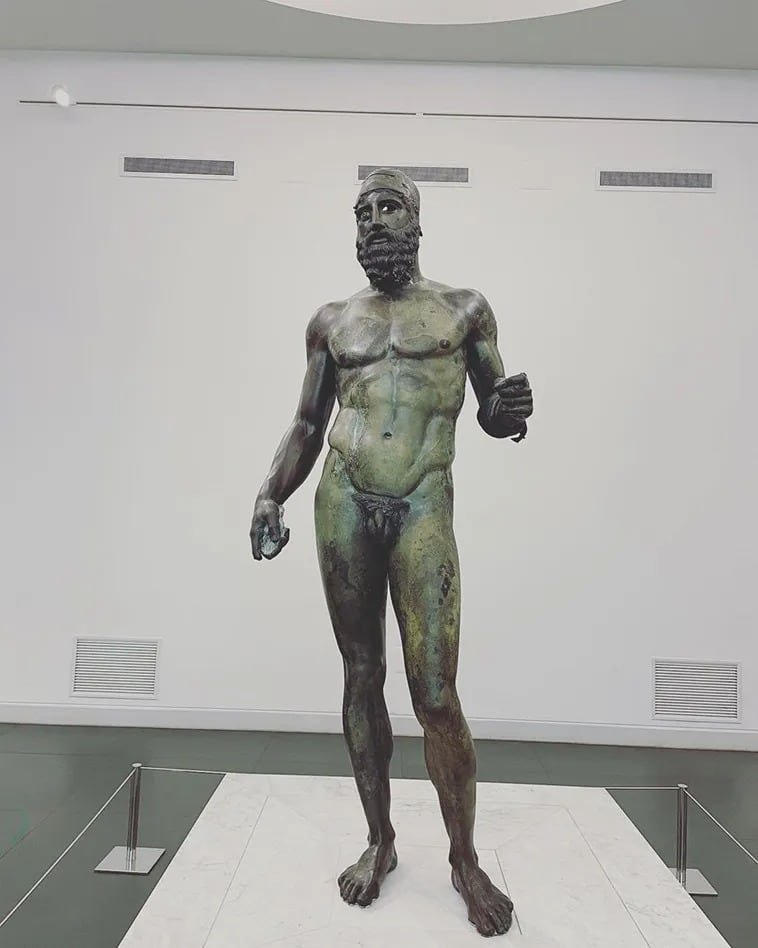
But, you may ask, how did two ancient Greek bronze sculptures, end up near Italy? It is thought that the two statues made it all the way from Greece to coast of Riace due to historical and cultural connections between ancient Greece and Italy. During ancient times, trade routes and cultural exchanges were common among Mediterranean civilisations. The period during which the bronzes were likely crafted in Greece during the 5th century BC, was a period renowned for its advancements in art and sculpture.
It's believed that at some point, the sculptures may have been aboard a ship traveling across the Mediterranean Sea. Various theories suggest that the ship might have been involved in trade, military expeditions, or perhaps was transporting valuable artworks. The ancient statues’ presence in the sea, hidden, for centuries, likely resulted from some historical event or accident, possibly involving a shipwreck or deliberate disposal. The exact circumstances of how the sculptures ended up in the waters near Riace, Italy remain uncertain, however their remarkable preservation underwater contributed to their eventual rediscovery and subsequent recognition as significant archaeological treasures.

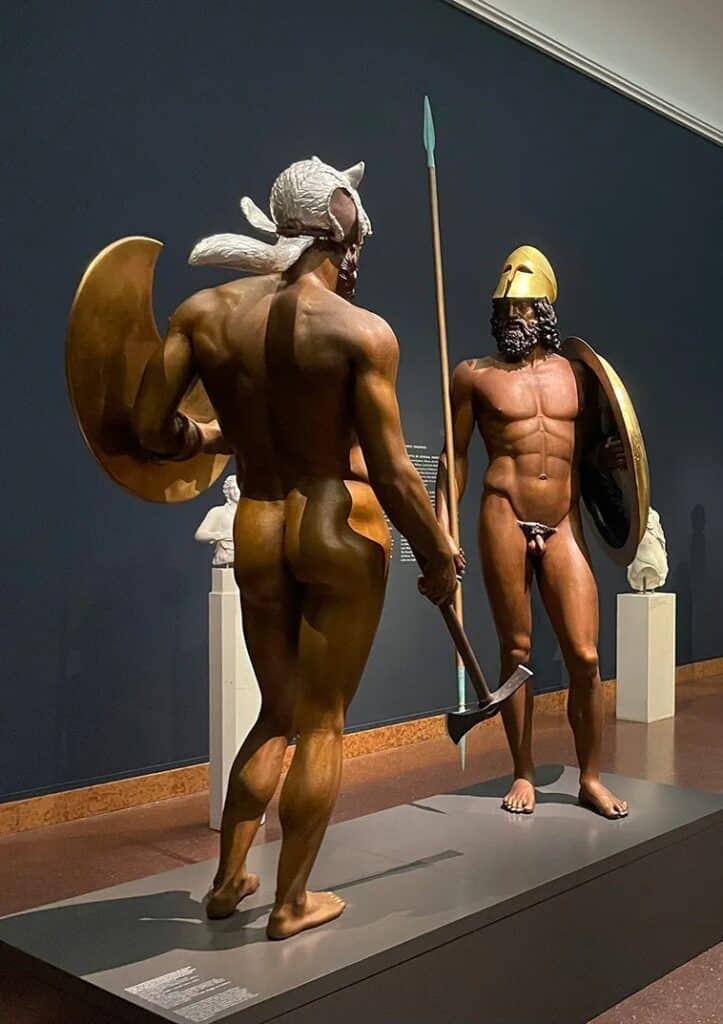
The journey of the Riace Bronzes, nonetheless, has not been without its challenges. Concerns about the ancient sculptures restoration and preservation led to their temporary removal from display at the National Museum of Reggio Calabria in 2010, highlighting the delicate balance between showcasing these treasures and ensuring their longevity.
Despite these challenges, the Riace Bronzes endure as enduring symbols of ancient Greek civilisation, and a reminder of the timeless allure of art and culture. As they continue to inspire awe and wonder, these magnificent sculptures invite us to marvel at the skill and creativity of our ancestors, bridging the gap between past and present with their silent, yet profound, beauty.
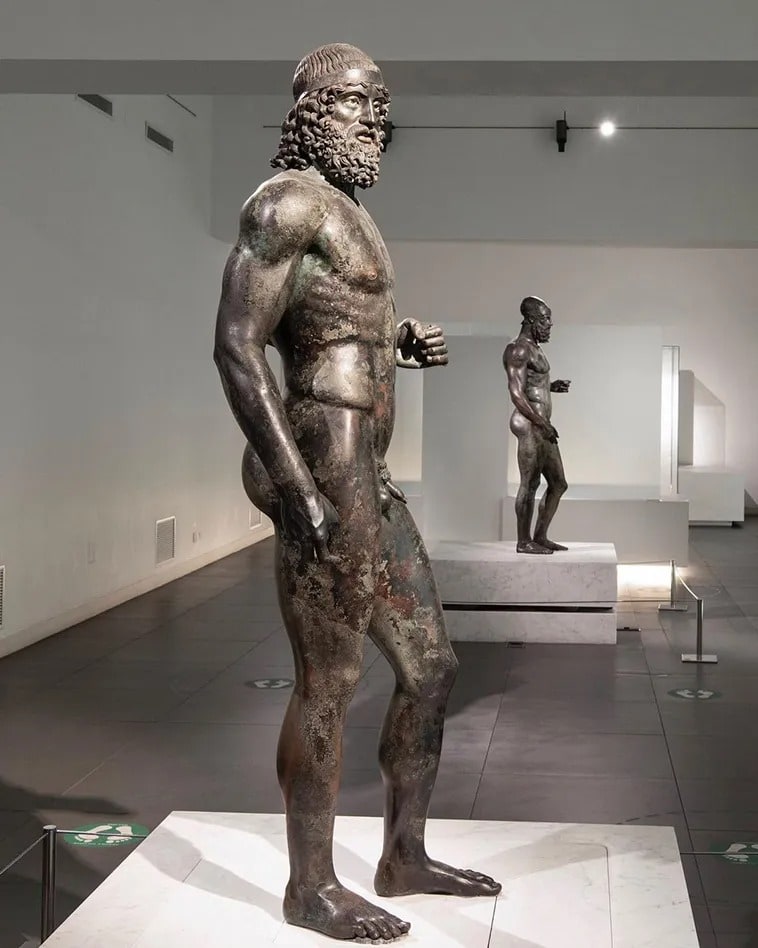
Read also: 'Fexting': The Silent Relationship Killer


